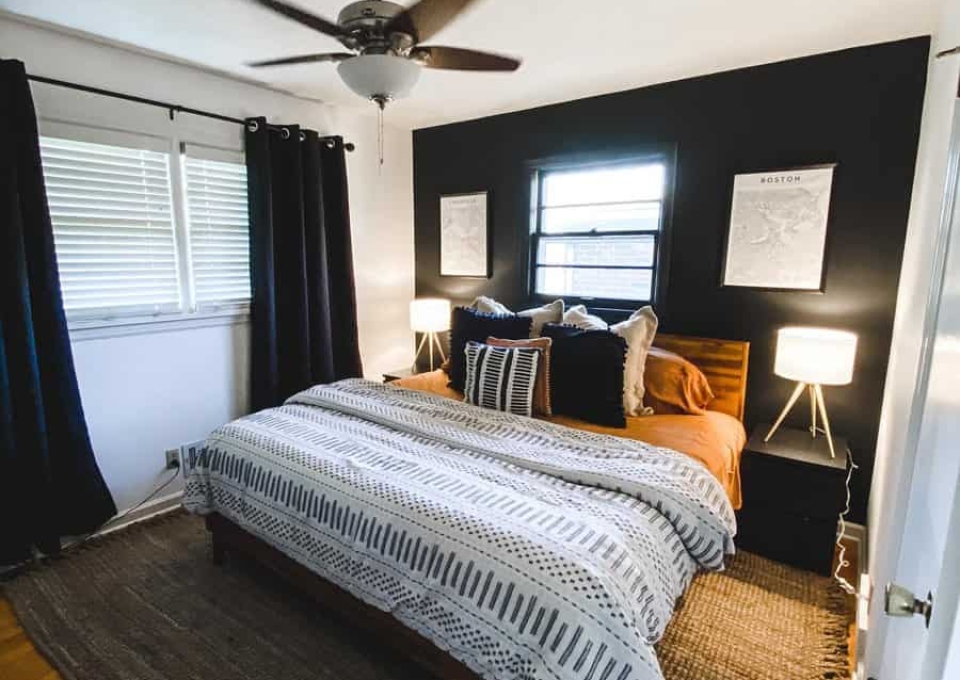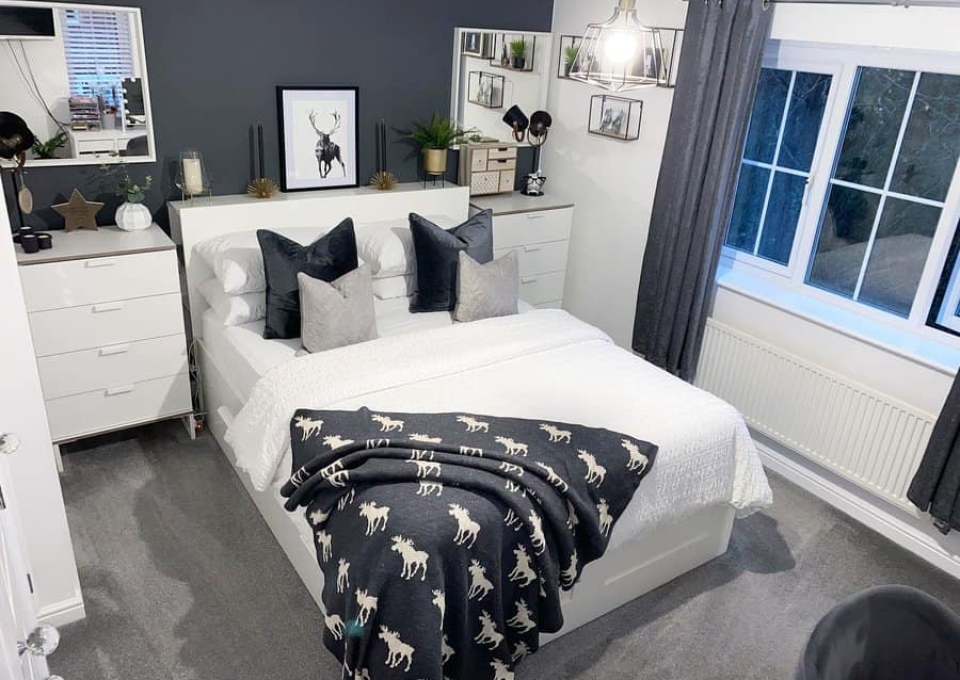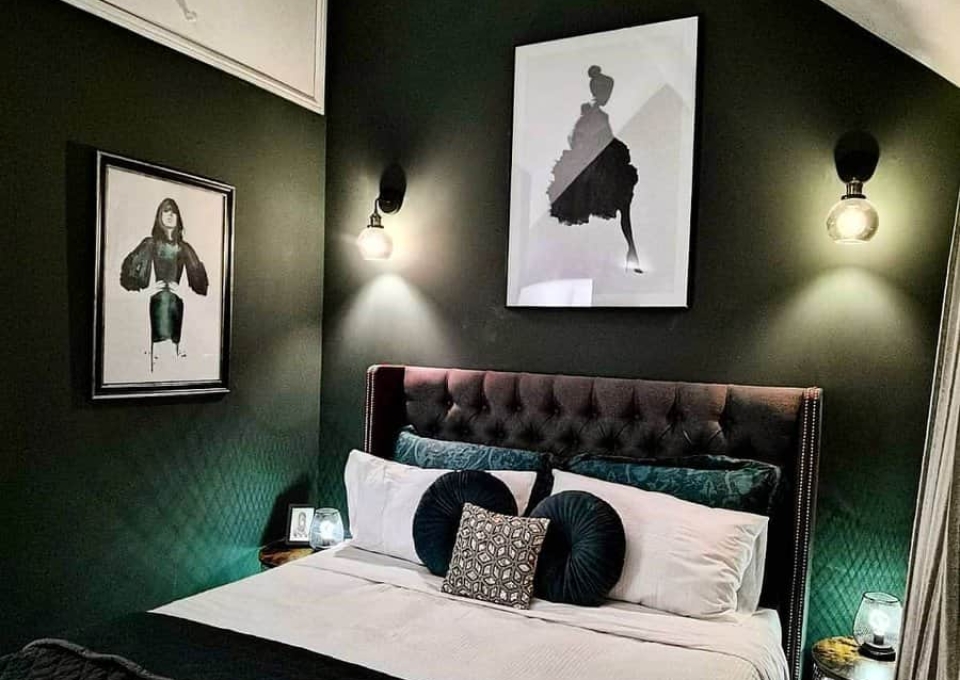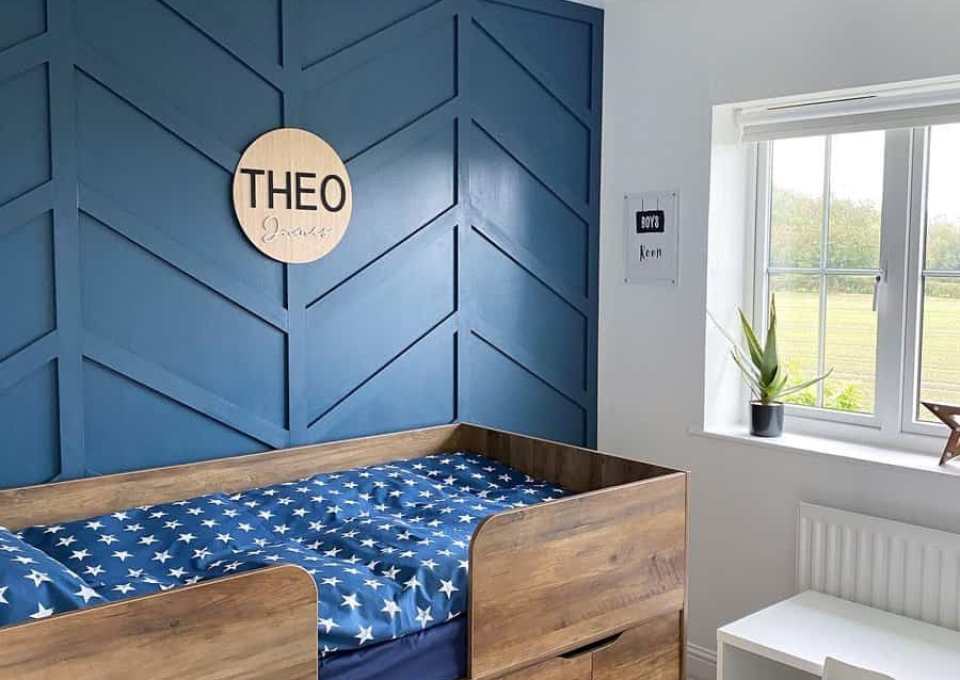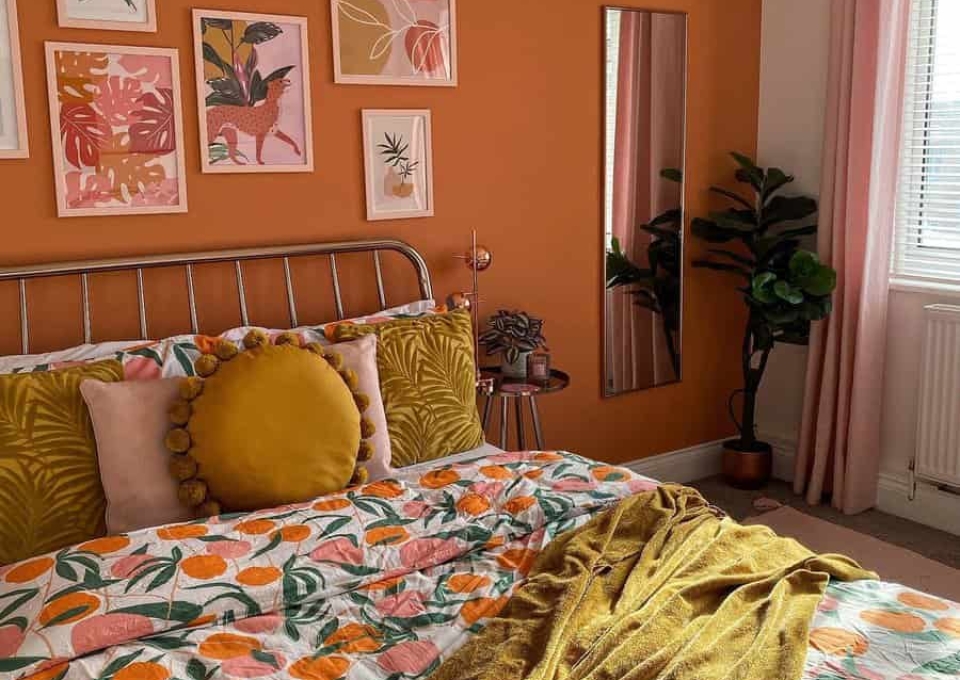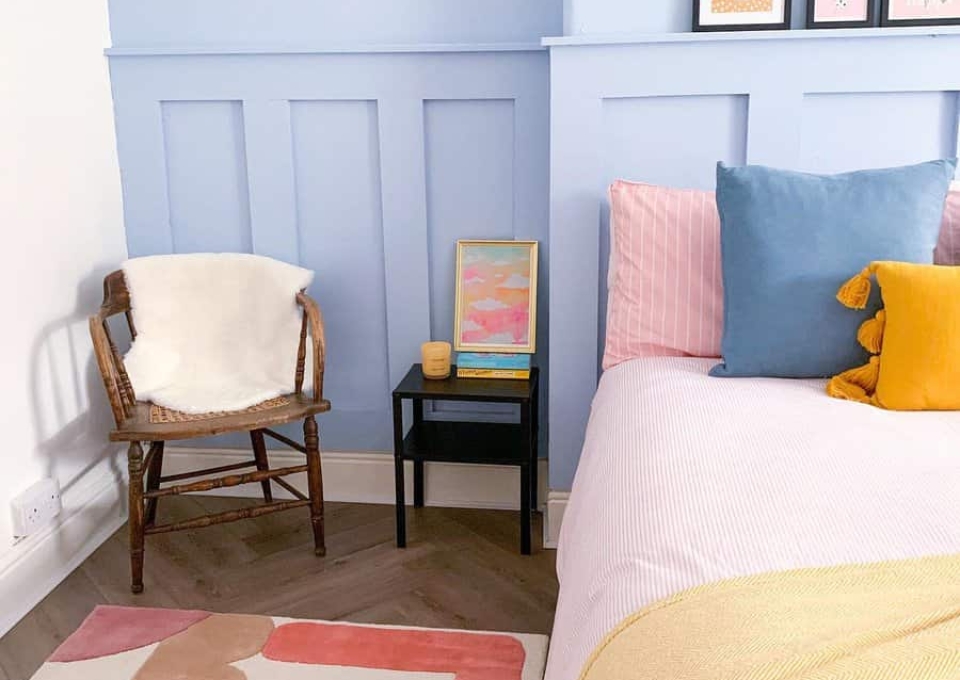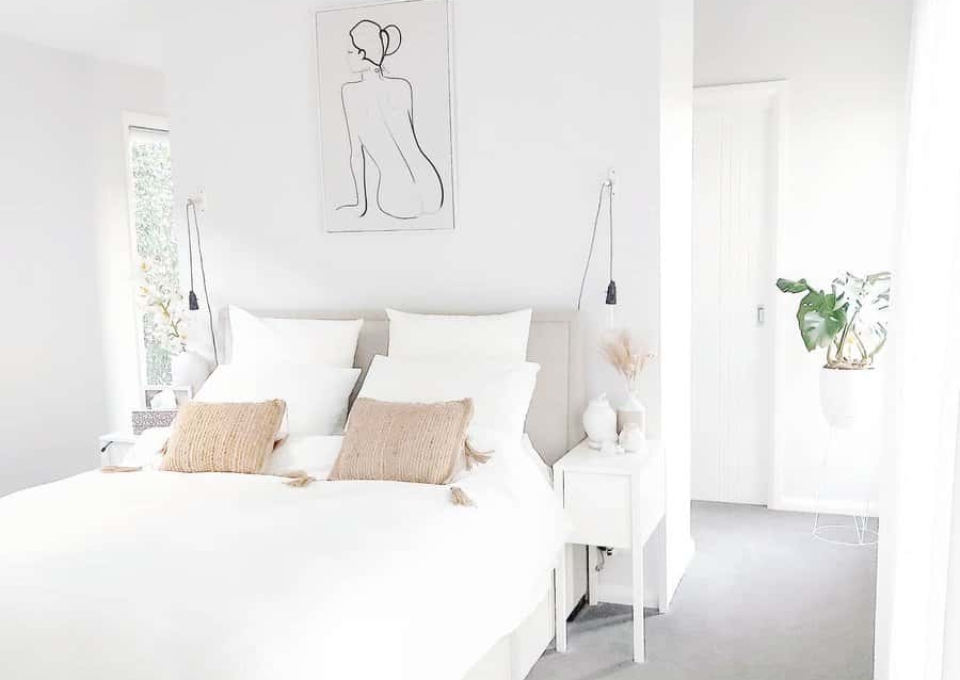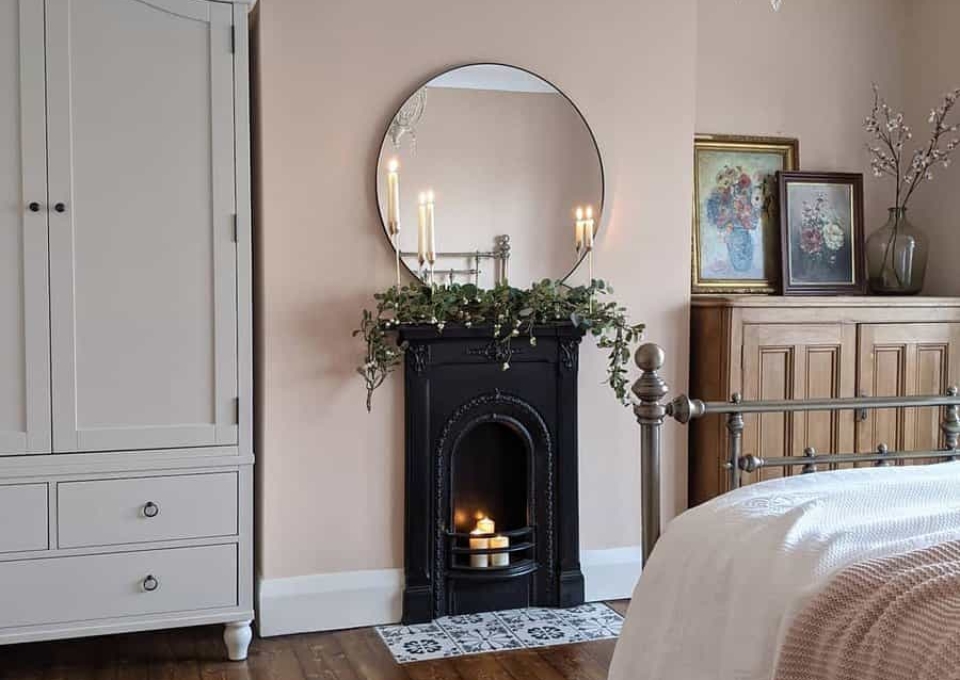Introduction to Bedroom Color Schemes
Contents

Understanding the Impact of Color
Color changes the feel of a room. A bedroom’s color scheme can either calm or invigorate, providing comfort after a long day. Choosing the right colors is not just about looks; it’s about creating an environment that feels like your personal retreat.
The Psychology Behind Color Choices
Colors impact mood. Soft blues and greens promote relaxation, while bold reds can energize. Knowing this helps you design a bedroom that is both attractive and comfortable. Choosing the right shade contributes to your well-being and comfort.
Planning Your Bedroom Makeover

Setting a Budget
Starting a bedroom makeover requires setting a budget. Account for everything—from paint to pillows. This financial plan ensures your ideas match your finances, avoiding unexpected costs and ensuring a smooth project.
Defining Your Style and Preferences
- Explore your tastes: Do you prefer modern minimalism or a classic look? Identifying your style is essential.
- Functionality meets beauty: Your bedroom serves multiple purposes. Make sure it suits your lifestyle, whether it’s a reading corner or a meditation area.
- Personal touches: Add elements that resonate with you, such as artwork, fabrics, or unique furniture pieces.
By clearly defining your preferences, you create a room that is both functional and reflective of your personal style.
The Role of Lighting in Color Perception

Natural vs. Artificial Lighting
Lighting significantly affects how colors look in your bedroom. Natural light shows the most accurate colors, making them more vibrant as the light changes throughout the day. On the other hand, artificial lighting can change color perception. Incandescent bulbs tend to warm up colors, while fluorescent lights often give a cooler tone. Knowing these effects is essential when choosing your bedroom’s color scheme.
How Lighting Affects Color Choices
- Daylight: Ideal for revealing true colors, making it perfect for a sunlit bedroom.
- LEDs: Provide various color temperatures, allowing precise control over color appearance at different times.
- Task lighting: Affects localized color perception, important for areas used for reading or dressing.
Choosing the right lighting is crucial for maintaining the true colors you love, regardless of the time of day or night.
Selecting the Best Paint for Your Bedroom

Types of Paint Finishes
Choosing the right paint finish is as important as selecting the color. Matte or flat finishes provide a non-reflective look but are less durable. Eggshell and satin finishes have a slight sheen and are more resistant to cleaning and light traffic, making them suitable for bedrooms. Semi-gloss and gloss finishes are durable, easy to clean, and reflect light well, though they can highlight wall imperfections.
Tips for Paint Sampling
- Test before you commit: Apply samples directly to the walls to see how they interact with your bedroom’s unique lighting conditions.
- Observe at different times: View the paint at various times of day to understand its dynamic with natural and artificial light.
- Consider the mood: Choose a finish that matches the atmosphere you want—whether tranquil, vibrant, or cozy.
Sampling is practical and helps personalize your space. The right finish enhances both durability and aesthetic appeal, ensuring your bedroom remains enjoyable and relaxing.
Incorporating Textiles and Accessories

Selecting Bedding and Curtains
Choosing the right bedding and curtains can significantly improve your bedroom’s look and feel. Select fabrics that match your color scheme and add texture. Consider the fabric’s weight and opacity to ensure a good balance of privacy and natural light.
Choosing Rugs and Throws
- Area rugs: Enhance your space and add comfort with a rug that either contrasts with or complements the room’s color scheme.
- Throws: A well-placed throw provides warmth and introduces a pop of color or a different texture, making your space more dynamic and inviting.
These items are functional and significantly contribute to the visual appeal of your bedroom.
Creating a Cohesive Look: Balancing Color and Texture

Integrating Furniture and Decor
Creating a cohesive bedroom design requires balancing color and texture so that each element complements the others without overwhelming the senses. Start by choosing a color palette that matches your personal style and desired mood. Soft, neutral tones can create a calming effect, while bold colors can add a dynamic touch. Once you have your palette, select furniture that fits the room’s function and enhances its aesthetic. A vintage wooden nightstand or a modern metal lamp can serve as focal points that draw attention and unify the room’s decor.
- Textural contrasts: Combine smooth, sleek furniture surfaces with plush textiles like velvet cushions or a shaggy rug to add depth and interest.
- Harmonious accents: Choose decor pieces that reflect the primary colors in your palette, but don’t hesitate to introduce a complementary shade for a pop of unexpected color.
By thoughtfully selecting and arranging each piece, you create a room that is both functional and aesthetically pleasing.
Bedroom Color Scheme Design Ideas
Black and White Bedroom Color Ideas
Step into a realm of chic sophistication with a black and white bedroom—a space where simplicity meets elegance. The stark contrast of black against white creates a modern and graceful look, perfect for those who appreciate monochrome beauty.
Picture a sleek black headboard, softened by plush white linens. Add textural contrasts with a knitted throw or a velvet cushion. To highlight the room’s style, consider a chrome lamp that reflects the room’s aesthetic.
Take inspiration from Lemonhousekc’s design, featuring a black accent wall as a focal point. This design element commands attention while complementing the room’s lighter features. The Homestead Reno offers a different approach with a white canvas accented by black details, creating an open yet grounded atmosphere.
Choose your bedding with intention:
- Geometric Prints: Add dynamic energy with patterns that play between the two colors.
- Solid Colors: Opt for pure colors to achieve a serene or striking effect.
Whether through stark contrasts or subtle shades, your bedroom will exude timeless refinement. Remember, black and white is more than a color scheme—it’s a lifestyle that balances simplicity and sophistication.
Monochrome Bedroom Color Ideas
Step into a monochrome bedroom—a space where simplicity and sophistication meet. Imagine walls painted in a soft grey, creating a serene backdrop. Bedding in a darker charcoal shade invites restful sleep, while light ash accents add a touch of elegance.
Select furniture that complements the subtle tones of your walls. Opt for pieces that blend seamlessly into the monochromatic theme, each contributing to a cohesive look. Textures come to life through accessories—lamps, rugs, and cushions add depth and interest to your peaceful retreat.
Monochrome is more than a design choice; it’s a lifestyle. Whether you prefer the cool tones of blues or the warm shades of beiges, your bedroom becomes a personalized haven, reflecting your unique style.
Dark Bedroom Color Ideas
Step into a space where dark tones create a serene and sophisticated atmosphere. Navy blue offers a calming effect, while charcoal gray brings a modern touch. For a luxurious feel, consider deep purple to give your bedroom a regal look.
Balance these rich colors with lighter accents like crisp whites and soft beiges to keep the room inviting. Dark-colored walls provide an excellent backdrop for your decor, whether you prefer a minimalist approach or a collection of vintage pieces.
Choose bedding in muted tones to complement the walls and let them stand out. Add metallic accessories and mirrors to reflect light and enhance elegance. The result is a cozy yet grand bedroom.
Dark hues are a bold style choice, creating an ambiance that lighter shades can’t match. Embrace this design approach to transform your bedroom into a unique and stylish retreat.
Blue Bedroom Color Ideas
Imagine a haven of tranquility, where calmness envelops you the moment you step inside. Blue hues in a bedroom create a sanctuary of serenity. Coastal blue walls reflect the sea’s depth, providing a restorative atmosphere ideal for restful sleep.
Sky blue evokes the heavens, its lightness making the room feel more spacious. This color lifts the spirit and expands small spaces. Pair it with bedding in soft white or gentle grey to maintain the room’s tranquil theme.
Introduce warmth with natural elements like wooden furniture and woven baskets. These earthy textures balance the ethereal blues. Add a touch of vibrancy with artwork or throw pillows in coral or sunshine yellow to create a dynamic look.
Textures enhance comfort: plush rugs and soft linen drapes contribute to the room’s cozy feel. Your blue bedroom becomes a peaceful retreat from the world’s clamor.
Kids Bedroom Color Ideas
Imagine a world of possibilities when choosing colors for a child’s bedroom. Soft pastels create a calming atmosphere, ideal for nurseries. These gentle shades pair well with plush toys and fairy-tale decor.
Looking for more energy? Bright primaries add vibrancy and stimulate imagination. They complement neutral furnishings, creating a lively yet balanced space.
For a nature-inspired look, consider gender-neutral tones. Sunny yellows, lush greens, and serene blues bring the outdoors inside. A coastal blue wall can evoke the sea, while muted browns provide a grounding effect, similar to a forest floor.
Patterns can also enhance the room. Printed wallpaper can introduce themes like high-sea adventures or enchanted forests. Accents are key to completing the look. Consider:
- Cozy Rugs: Soft surfaces for little feet.
- Playful Bedding: Fun designs that inspire dreams.
- Educational Toys: Items that entertain and teach.
Bold Bedroom Color Ideas
Imagine a bedroom filled with vibrant energy – walls painted in a bright orange or a rich red that exudes luxury and romance. Consider the sophistication of jewel tones like emerald green or sapphire blue, creating an elegant atmosphere.
Incorporating these bold colors doesn’t have to be overwhelming. An accent wall or a carefully chosen selection of bedding and accessories can make a significant impact. For a more subtle approach, use throw pillows, artwork, or a bold furniture piece to introduce color.
Balance is essential – let bold shades stand out against neutral backgrounds to create a space that is both lively and harmonious.
Brown Bedroom Color Ideas
Step into a world where brown offers comfort in every shade. Picture the soothing effect of mocha walls, providing a serene backdrop, while walnut furniture adds earthy confidence.
Enhance your space with luxurious textures—a taupe comforter that’s soft to the touch, or caramel throw pillows that invite relaxation. Bronze accessories and gold accents add sophistication, casting a warm glow across the room.
Brown is a versatile color that pairs well with others. Creamy whites and soft greens complement brown, creating a bedroom that’s both serene and stylish.
Here’s how to elevate your bedroom with brown’s versatile charm:
- Wall Tones: Choose from a range of browns, from subtle beige to rich espresso.
- Textile Richness: Add depth with plush bedding and drapes in various shades of brown.
- Metallic Glints: Introduce metallics like bronze or gold for a refined sparkle.
- Complementary Colors: Pair brown with harmonious hues for a balanced look.
Illuminate Your Sanctuary: Light Bedroom Color Ideas
Transform your bedroom into a bright and inviting space with light colors. Pastel shades, like soft blue, create a calm and restful environment.
Consider bone white for a timeless look. This color reflects daylight, making your room feel larger and more open. It’s ideal for a minimalist and cozy setting.
Light gray offers modern sophistication. It pairs well with vibrant accents or a monochromatic scheme, providing a sleek and refined look.
Incorporate these colors into your bedding and decor. Luxurious linens in matching shades promote relaxation, while accent pillows add personality. Balance is key:
- Harmony – Use light tones as the base, with bold contrasts for depth.
- Texture – Combine different materials like plush fabrics and smooth surfaces for variety.
- Accents – Add decorative elements to showcase your style.
Explore these light bedroom color ideas to create a personal oasis that is both open and intimate.
Embrace Serenity with Neutral Bedroom Hues
Step into a realm of calm. Neutral bedroom hues offer serenity, creating a peaceful retreat in your private space. Light gray, beige, and taupe—these colors embody tranquility.
Imagine walls painted in bone white or light grey. They provide a subtle backdrop, ready for your personal touch. Furniture in muted tones adds depth without overwhelming the room’s serene atmosphere. Accessories in matching shades complete the look, forming a cohesive sanctuary.
Neutrals adapt to your style changes. They welcome seasonal updates or accent colors, allowing for easy refreshes without major changes. Opt for a clean white that glows in the morning light or a limewash grey for understated elegance—neutral bedrooms are timeless.
White Bedroom Color Ideas
Step into a peaceful space with a white bedroom—a perfect canvas for relaxation. White’s brightness makes the room feel larger and provides a clean backdrop that promotes tranquility. Textures and materials play a crucial role, from the softness of linens to the natural feel of wood, adding depth and interest.
Imagine walls painted in pristine white, complemented by creamy bedding that invites you to relax. Carefully chosen accessories add subtle contrasts—consider a knitted throw or a shaggy rug to break the uniformity with their tactile appeal.
To add warmth to the minimalist look, incorporate elements that bring life. Greenery adds a touch of nature, while soft lighting fixtures create a cozy and elegant atmosphere.
Transform your bedroom into a harmonious retreat, where every detail contributes to a serene environment. Let the white bedroom be your sanctuary of calm, blending style and comfort seamlessly.
Pink Bedroom Color Ideas
Step into a space where pink is the star, creating a bedroom that feels both inviting and stylish. The soft blush of pink adds a touch of sophistication, turning your room into a cozy and elegant retreat. Imagine walls painted in this gentle shade, providing a perfect backdrop for a mix of textures and tones in your bedding and decor.
Incorporate various shades of pink—from the subtle tones of dusky rose to the warm hints of salmon—to add visual interest. Pair these with creamy whites or elegant greys to maintain a serene and airy atmosphere. For a bit of flair, add metallic accents in gold or copper through lamps or picture frames, giving the room a subtle sparkle.
Pink is versatile, offering a calming effect at night and a refreshing feel in the morning. Every element in the room should enhance comfort and style, making it a place where you can unwind.
Decorate your bed with plush pillows in different pink shades or patterns to add texture. Floral wall art can tie the room together, while a stylish rug anchors the space. Balance is crucial—let pink be the focal point without overwhelming the room. Curate thoughtfully, and your bedroom will become a personalized haven.
.
In Closing
Utilize the power of color in your bedroom to create a space that reflects your style and enhances your well-being. From calming pastels to bold dark hues, each color choice impacts your sanctuary, influencing mood and perception through light and texture. As you plan your bedroom makeover, use these insights to design a space that looks great and feels uniquely yours. Let your bedroom be a testament to your taste and a refuge in your home, inviting relaxation and reflection.

